Rule of thirds is one of the core composition guidelines that all photographers must know about. It is not so much of a strict rule, as it’s more of a guideline.
The image looks really powerful when you put points of interest in the thirds of your frame. Any of these points, with emphasis on where the lines intersect, will make your image more dynamic and pleasing for the viewer.
The same applies to portrait photography. When you move the emphasis from the center to the thirds, it will look and feel better. When you position the main subject by the “rule of thirds,” it’s like you are creating a roadmap for your image. You are helping guide the viewer’s eye to the subject and create a better visual story.
This post may include affiliate links. Please read our disclosure policy. [048]
Camera: Canon EOS 5DS R |Lens: Canon EF 85mm f1.2L II USM
Sky Natural Light | f/1.2, 1/200s, ISO 800 | Photo by © Sergey Bidun
WHAT IS THE RULE OF THIRDS FOR PHOTOGRAPHY?
The rule of thirds is believed to have emerged during the Renaissance time. Painters and artists were developing new art styles and discovered something new in the composition of their paintings.
They noticed that when they move the main subject from the center position to the side of the frame, the painting becomes more interesting. This subject placement created a bigger visual story by revealing more of the background.
Later on, with the start of photography, the term “rule of thirds” emerged. Rule of thirds implies putting the subject or point of interest into a specific location in the frame.
The rule of thirds is one of the compositional rules/guidelines that applies to landscape, street photography, pet photography, and portrait photography. This rule recommends dividing the image into thirds and placing your subject into one of those sides, instead of in the center. Composing your subject this way helps create a stronger image.
Camera: Canon EOS 5DS R |Lens: Canon EF 85mm f1.2L II USM
Sky Natural Light | f/1.2, 1/160s, ISO 2500 | Photo by © Sergey Bidun
HOW TO USE THE RULE OF THIRDS?
Let’s discuss in detail how the rule of thirds is applied in portrait photography.
First, you divide the frame by drawing two, even horizontal lines and two vertical ones. This creates nine equal parts with four intersecting points. Placing your subject into one of these intersecting points creates a much more dynamic conversation with the person viewing the photo and the subject of the image.
Many DSLR and mirrorless cameras already include the rule of thirds grid, which makes it very convenient. You can choose to display this grid in the live view mode, as needed. (Personally, I like turning on this feature during landscape photography).
It’s all about where the viewer’s eye is going. In portrait photography, the viewer’s gaze is almost immediately drawn to the eyes of the subject. Eyes are the most powerful part of the face portrait. Looking into the subject’s eyes is how people connect with each other.
With eyes, you instantly open up the emotional connection side. A good general rule is to put the subject’s eyes in the top third, framing-wise. Framing the subject and having their eyes always in mind is definitely a key to creating that viewer to subject connection.
Camera: Canon EOS 5DS R | Lens: Canon EF 50mm f/1.2 L USM Lens
f/2.2, 1/160s, ISO 100 | Photo by © Sergey Bidun
Light: Profoto B1 500 AirTTL System
WHAT IS PHOTO COMPOSITION?
Composing an image is placing the elements of your image in a way that will convey a story to the viewer. Composition rules apply to different genres of art, such as paintings, illustrations, photography, and others.
Without the basic knowledge of photo composition, your visual art will appear to be at a beginner level. Proper composition helps to emphasize the subject or main element, by creating an overall balanced art piece.
As a photographer, you should work hard to compose your image so that the viewer doesn’t need to work hard to understand what the subject is and what the actual story is. This is why composition is so important in photography.
Camera: Canon EOS 5DS R | Lens: Canon EF70-200mm f/2.8L IS II USM
Back Sun Light | f/2.8, 1/320s, ISO 640 | Photo by © Sergey Bidun
WHAT ARE THE RULES OF COMPOSITION?
There are quite a few other rules of composition – or I should call them guidelines. These compositional suggestions are helpful for all photographers to know, so then you will know when and where you can break them. (More on that later in the article).
THE RULE OF THIRDS COMPOSITION
This is one of the main guidelines in photography composition. The rule of thirds helps you frame the main subject in a more aesthetically pleasing way rather than in the center, which may look boring.
Camera: Canon EOS 5DS R | Lens: Canon EF70-200mm f/2.8L IS II USM
Back Sun Light | f/2.8, 1/250s, ISO 400 | Photo by © Sergey Bidun
CENTER COMPOSITION / SYMMETRY
Composing the subject right in the center can also make your image very interesting. One thing you have to understand is that you have to balance left and right, or the top and bottom part of the image.
This type of composition works best if you want to show a certain symmetry in the scene, or you want to show some reflection. Center composition can make amazing images where your images will look simple and, at the same time, visually appealing.
Camera: Canon EOS 5DS R |Lens: Canon EF 85mm f1.2L II USM
Sky Natural Light | f/1.8, 1/320s, ISO 800 | Photo by © Sergey Bidun
LEADING LINES COMPOSITION
Leading lines are the available lines that lead to a single point – the subject of the image. You can use this echnique to spice up your image and make it more dynamic.
There is a challenge with using a leading lines technique – it’s not easy to get the perfect shot. It’s the photographer’s job to visualize those lines and determine which way they are leading, to create an interesting image.
Leading lines can take some time to practice visualizing and photographing, but your images will look more powerful.
Camera: Canon EOS 5DS R | Lens: Canon EF70-200mm f/2.8L IS II USM
Back Sun Light | f/2.8, 1/320s, ISO 200 | Photo by © Sergey Bidun
FRAME WITHIN A FRAME COMPOSITION
Another excellent tip for composition is using the surroundings for framing your shot. Frame within a frame refers to using buildings, structures, or anything else as a frame for your subject.
Positioning your subject within a so-called frame will help to guide the eyes of the viewer right to the main object of your image. It also gives your image a more dynamic perspective. Try using this technique next time you are photographing portraits.
Camera: Canon EOS 5DS R |Lens: Canon EF 85mm f1.2L II USM
Sky Natural Light | f/1.2, 1/200s, ISO 500 | Photo by © Sergey Bidun
LEADING ROOM AND HEAD ROOM
The head room is the space you leave for the subject in a frame above their head. You don’t want to leave too much head room, while cropping the body of the subject, and vise versa.
Typically photographers don’t cut off the top part of the head unless this is the frame they are going for. Only the experienced professional photographers go into tight cropping like that.
Leading room is the direction that your subject is looking, and their body is facing towards. Always make sure that the leading room part of the frame is larger than the other part of the frame. It’s much more visually pleasing to see a portrait with a proportional leading room in front of the subject.
Camera: Canon EOS 5DS R |Lens: Canon EF 85mm f1.2L II USM
Sky Natural Light | f/2.0, 1/1250s, ISO 125 | Photo by © Sergey Bidun
ADDING FOREGROUND FOR DEPTH
Every image has a foreground, a midground, and a background.
If you add some kind of foreground element that complements the scene, your images will look much more powerful. It can also help to tell the story and draw the attention of the viewer from the foreground to the background where the actual element is present.
This technique is often used in landscape photography. It’s a great idea to add rock, log, or another point of interest when photographing an open sea, for example.
Camera: Canon EOS 5Ds R | Lens: Canon EF17-40mm F/4L USM
Natural Light | f/22, 5sec, ISO 50| |Lee ND Filters
Photo by © Sergey Bidun
FOCAL LENGTH AND APERTURE
The focal length of your lens will give you a very different perspective, even if you are photographing from the same distance. Every focal length has a different look to it. As you zoom in, the background starts compressing. You have to know the shot you are looking to achieve and choose your focal length accordingly.
For landscape photography, you would want to shoot with a wider lens. For portrait photography, I would suggest going with a lens 35mm-85mm in focal length.
Aperture is responsible for the background. If you focus on an object while using a wider aperture, the background will be out of focus. Typically photographers do that when the background is not interesting, and they want to separate the background from the subject.
Use a smaller aperture if you want the background to be included. Adjust aperture according to how much and how you want the background to appear.
Camera: Canon EOS 5DS R |Lens: Canon EF35mm f/1.4L USM
Sky Natural Light | f/3.2, 1/4s, ISO 800 | Photo by © Sergey Bidun
BREAKING THE RULE OF THIRDS
Now that we’ve discussed most of the main composition rules and guidelines, I’m going to tell you that it’s ok to break these rules.
Every photographer is a creative soul with their own unique vision in this big world of art. We have our own style of photography, our signature way of photographing and editing.
You’ve probably heard this term in photography: you have to first know the rules of photography before you can break them. Once you are familiar with these guidelines and suggestions, you will know which ones you want to apply to your photography.
I want to make one suggestion to portrait photographers as to where you want to break the rule of thirds. Don’t follow the rule of thirds when you are photographing standard business headshots. This is a specific type of portrait that needs to be taken at the right angle with the right crop.
For senior portraits, family pictures, or kids portraits – go ahead and practice shooting using the rule of thirds technique. It will help your images to tell a visual story to the viewer.
Camera: Canon EOS 5DS R |Lens: Canon EF 85mm f1.2L II USM
Sky Natural Light | f/2.8, 1/1200s, ISO 640 | Photo by © Sergey Bidun
RULE OF THIRDS IN POST-PROCESSING
Can you fix the composition of the image during post-processing? Sure, you can crop the image a bit or straighten the horizon line, but honestly, it’s hard to fix the composition of the image that was taken at a bad angle.
As in all genres of photography, it’s important to get the shot right during the photo shoot time. Minimize the amount of work you need to do in post-processing.
Visualize the image that you want to achieve, and try to frame it correctly during the photo session. If getting the subject aligned by the rule of thirds technique is not easy at first, you can definitely crop the image in post-processing.
Camera: Canon EOS 5DS R |Lens: Canon EF 85mm f1.2L II USM
Sky Natural Light | f/1.8, 1/800s, ISO 100 | Photo by © Sergey Bidun
CONCLUSION
I hope this article was informative for you, and you learned a lot about the Rule of Thirds and the Composition in portrait photography.
Don’t over-complicate the composition. Make your composition simple and, at the same time, visually appealing to the viewer. Now get out and start putting these techniques to practice.
IF YOU FOUND THIS POST HELPFUL AND INFORMATIVE PLEASE SHARE IN YOUR SOCIAL MEDIA.
Photographer: Sergey Bidun
Written by Maria Bidun


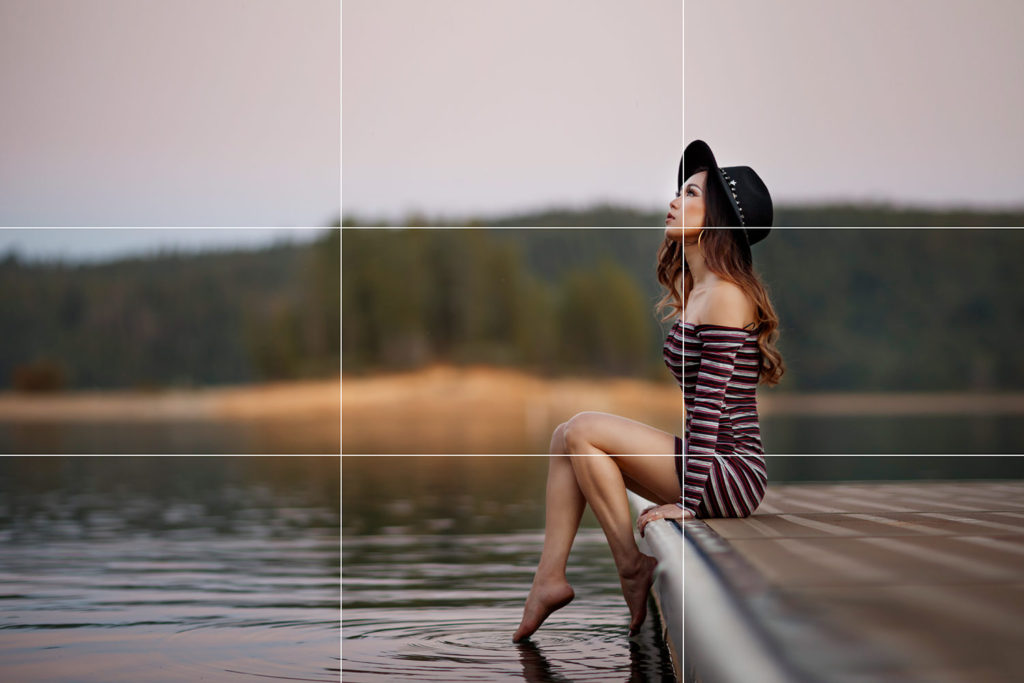
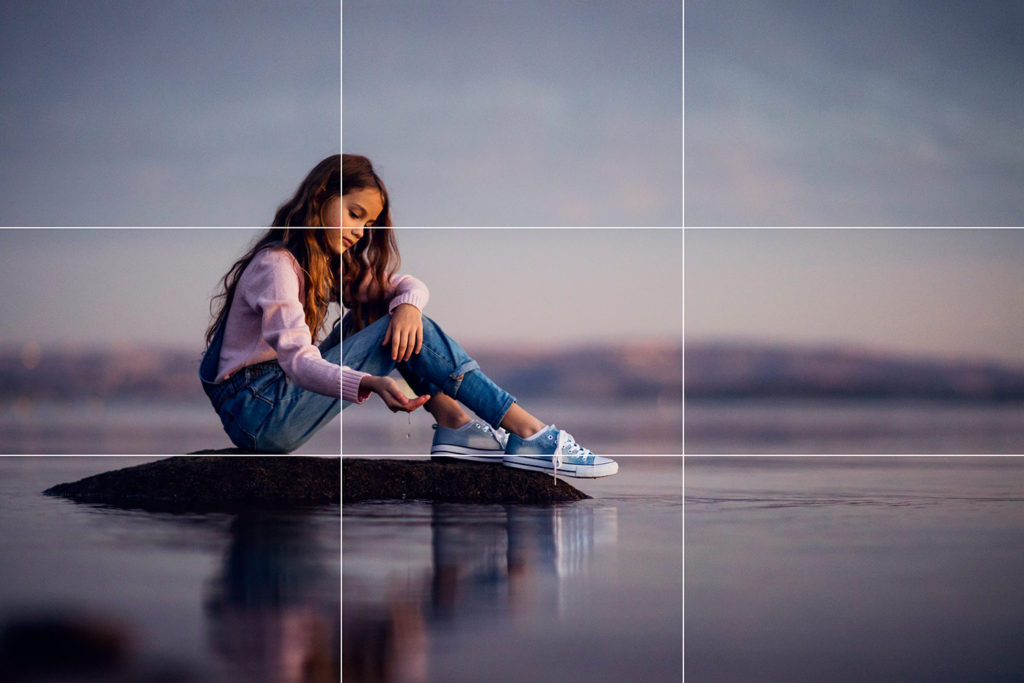
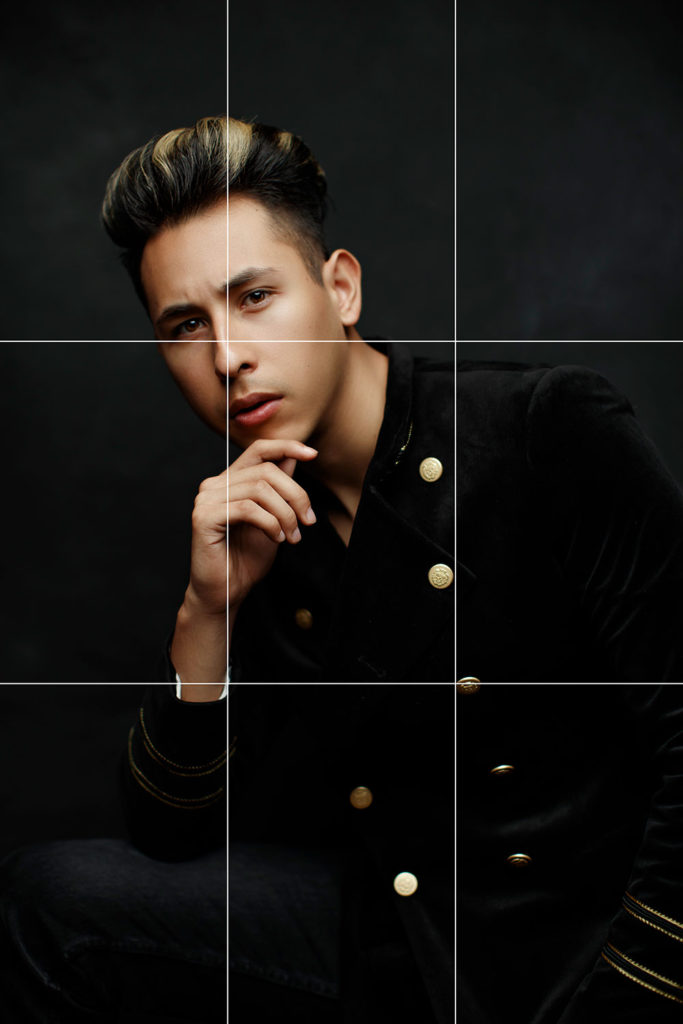
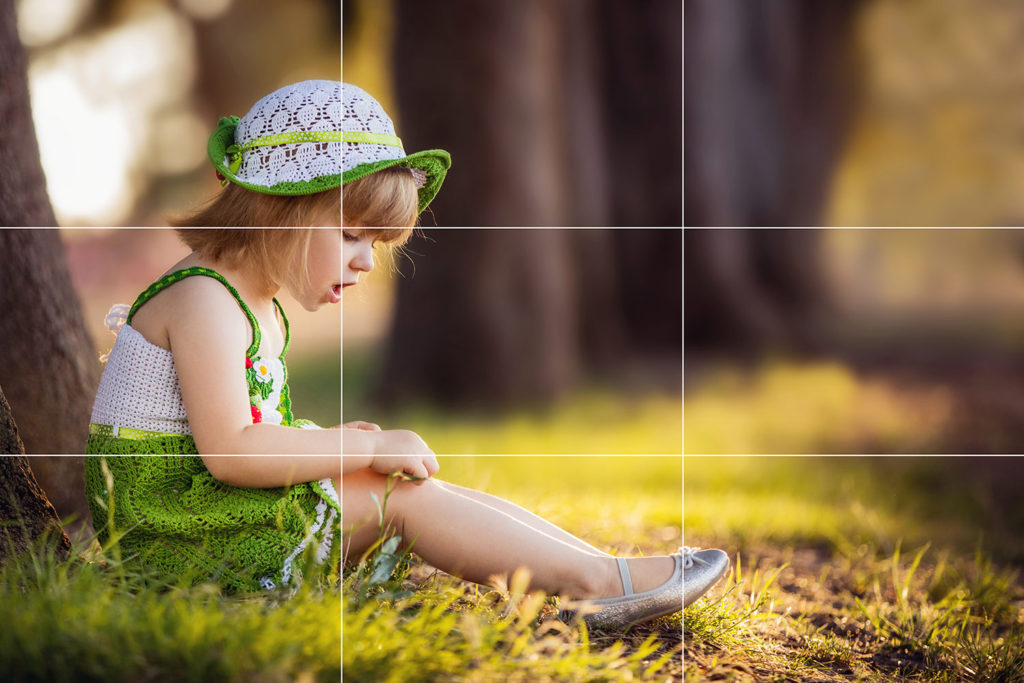


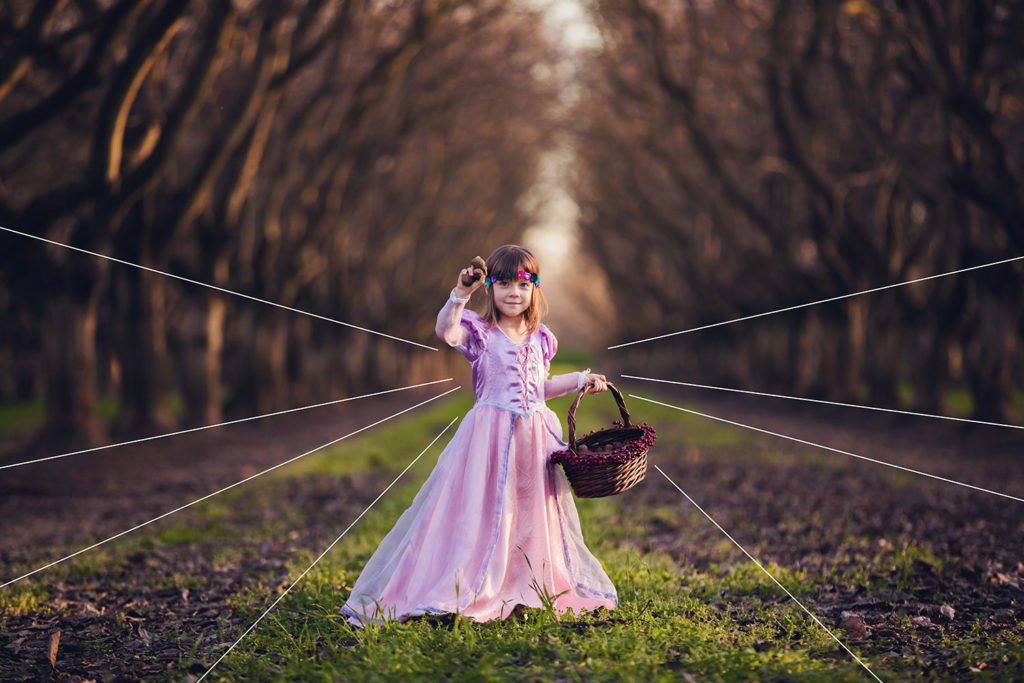
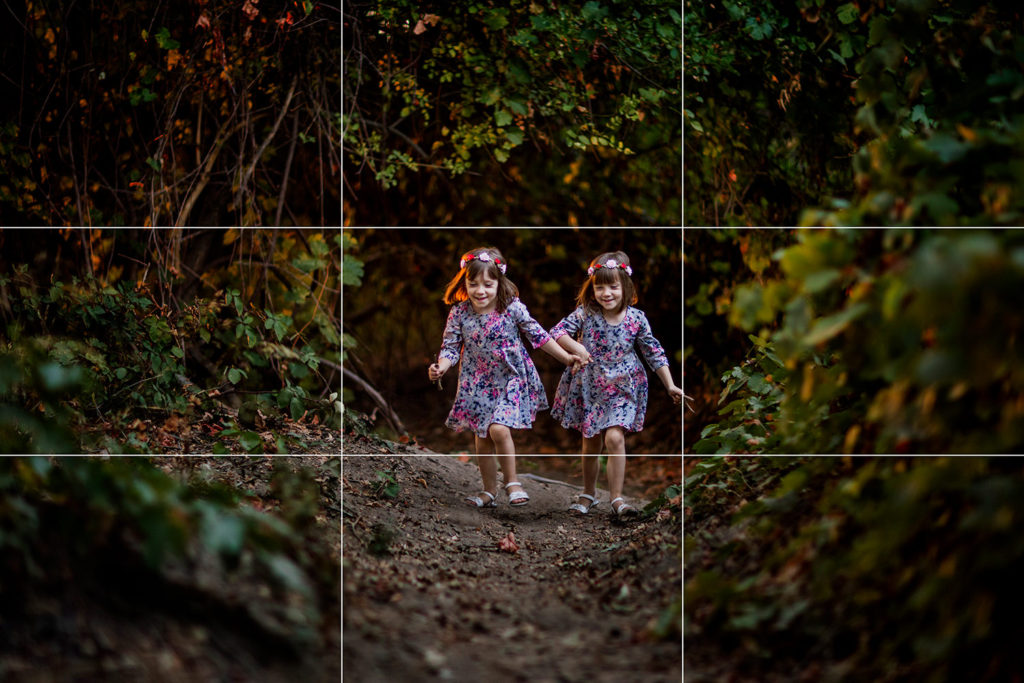

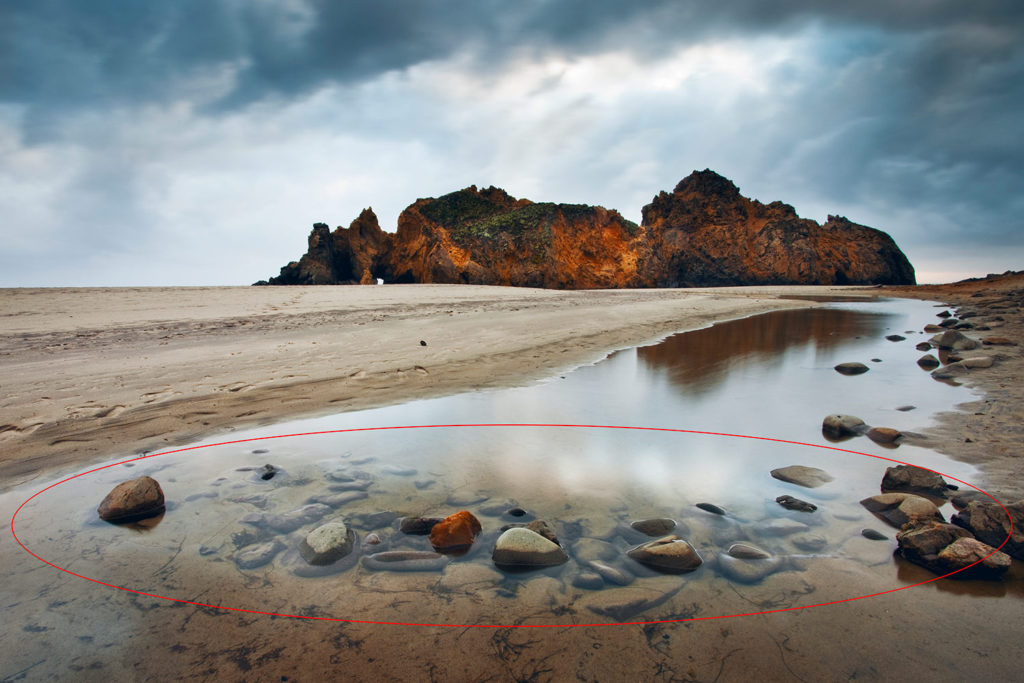
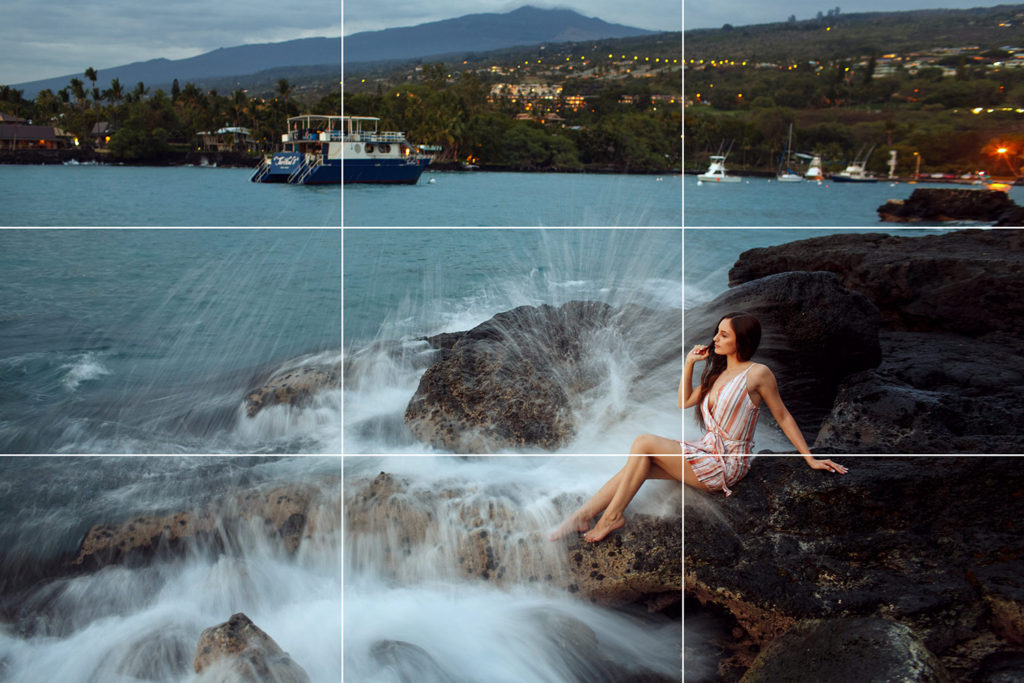
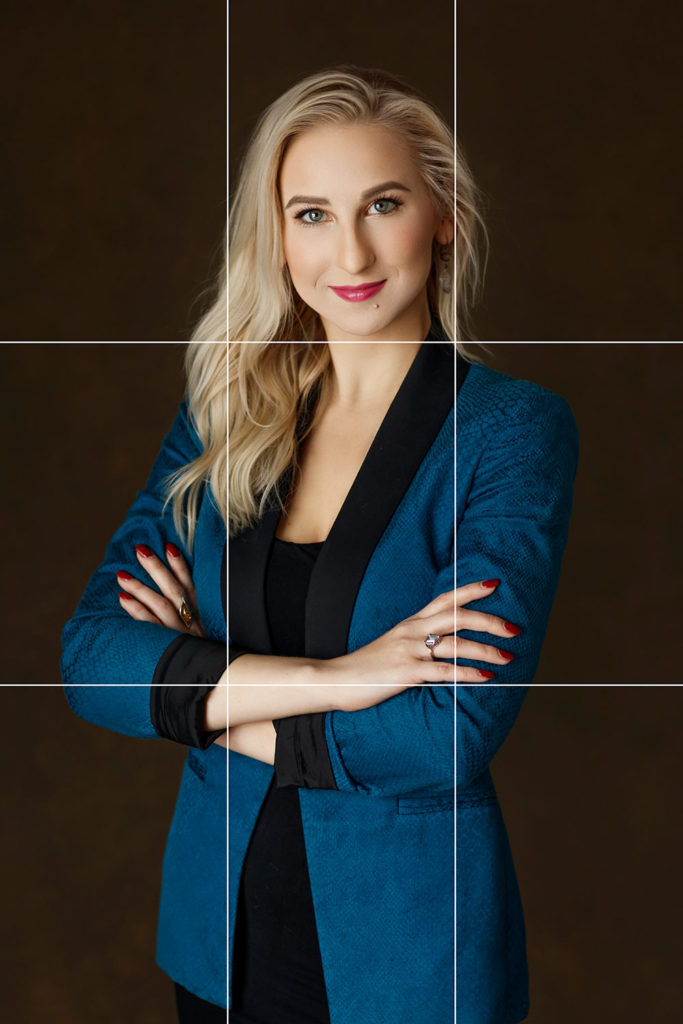
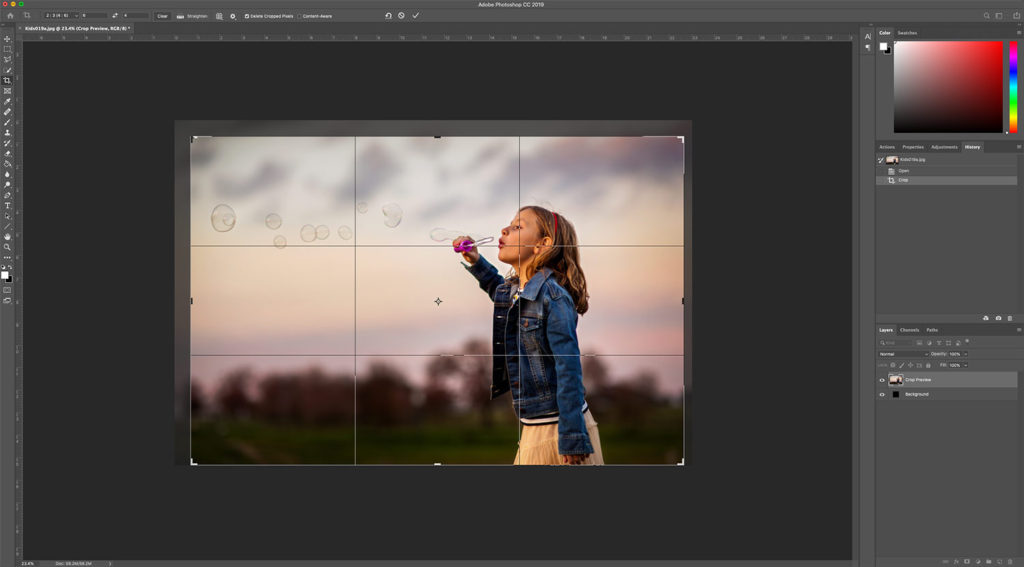
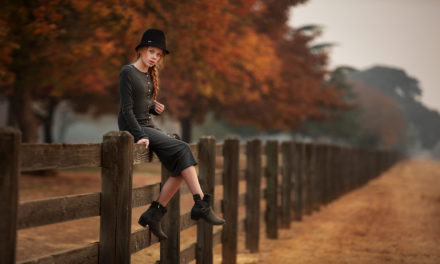
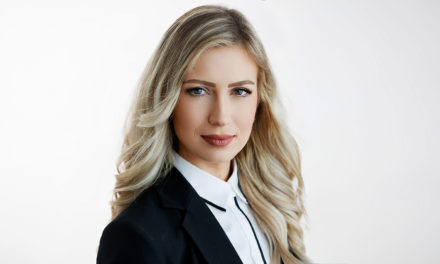
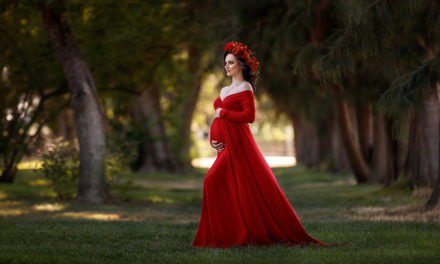
![Black and White Portrait Photography [Ultimate Guide]](https://bidunart.com/wp-content/uploads/2020/04/Portrait183a-440x264.jpg)